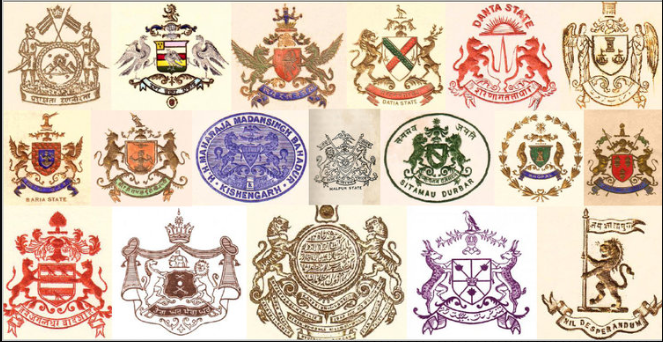HISTORY OF THE INDIAN PRINCELY STATES
The year 1701 is a convenient date at which to start a history of the Indian princely states as it marks the death of the last great Mughal emperor, Aurangzeb, whose dynasty had ruled India as a unified state for almost 150 years, and the beginning of the rapid decline of the Mughal raj. The following 150 years were times of political chaos until the sub-continent was again functioning as a unified state, this time under another foreign raj, that of the British.
This book follows the formation and the fortunes of the 800 or so states that predated or emerged from the wreckage of the Mughal empire.
At the start of the 20th century the British raj, successor to the Mughals, was at the height of its power. In addition to directly administering three-fifths of the sub-continent, it exercised paramountcy over almost 600 principalities that had survived the collapse of the Mughal power and the consolidation of the British power. Half a century later these princely states had ceased to exist – abolished at the stroke of a constitutional pen to form part of the successor raj to the British, the Republic of India.
This book provides an all-India overview history of the princely states, both those which emerged from the demise of the Mughal empire and those which predated and survived the Mughal raj, up to the watershed 1857 uprising in north India. It investigates the constitutional relationship between the states and the British crown, the new paramount power, as this lay at the core of the political relationship between the two polities on the subcontinent: princely India and British India. It then examines the constitutional, economic and populist forces at work during the ensuing nine decades and considers those actions and attitudes of the princes in the period leading up to India’s independence that virtually ensured their extinction after 1947.

